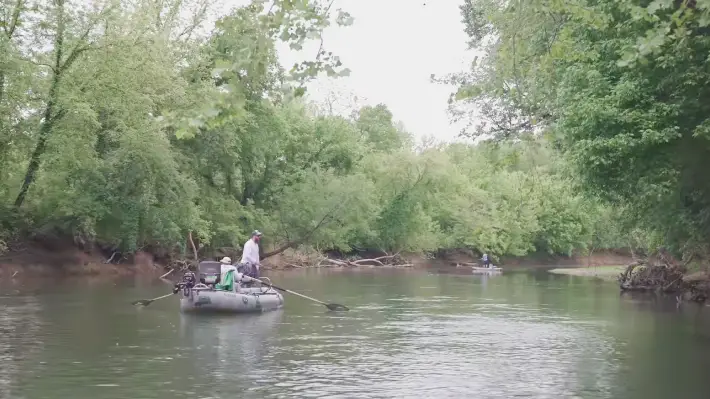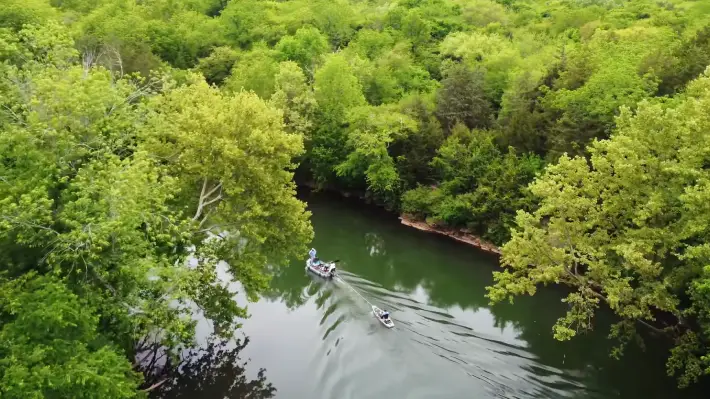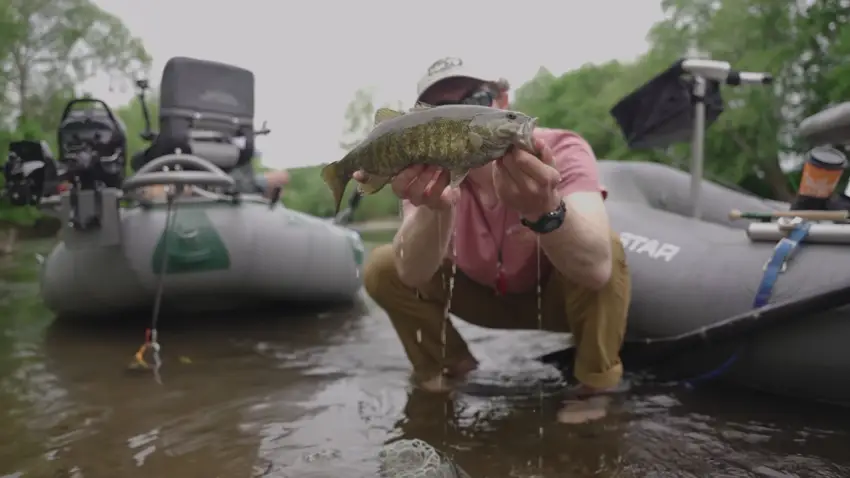Key Takeaways:
- Alabama has plenty of fly fishing opportunities, with diverse locations, fish species, and year-round fishing possibilities.
- Top fly fishing spots in Alabama include the Gulf Coast, Aldridge Creek, Cahaba River, Coosa River, Elk River, and many others, providing various angling experiences.
- The best time for fly fishing in Alabama varies according to location and target species, with spring and summer being popular seasons.
- Fish species you can catch in Alabama through fly fishing include redfish, speckled trout, bass, crappie, catfish, rainbow trout, striped bass, flathead catfish, and more.
- To ensure a responsible and enjoyable fly fishing experience, anglers in Alabama must follow the rules.
List of the Top 15 Fly Fishing Spots in Alabama

Alabama offers a wealth of fly fishing opportunities, and here’s a list of the top 15 spots to cast your line and reel in some unforgettable experiences.
- Alabama Gulf Coast
- Aldridge Creek
- Cahaba River
- Coosa River
- Elk River
- Joe Wheeler State Park
- Lake Lewis Smith Dam
- Little River Management Area
- Mud Creek in Tannehill State Park
- Mobile Bay
- Sipsey Fork of the Black Warrior River
- Styx River
- Tallapoosa River
- Tombigbee River
- Wilson Lake/Tennessee River
1. Alabama Gulf Coast
- Situated along the coast of the Gulf of Mexico in the southern region of the US. It covers Gulf Shores, Orange Beach, and Dauphin Island in Alabama.
- Known for its diverse saltwater fish species, making it a hotspot for deep-sea fishing and fly fishing opportunities in the deeper waters and from the shore.
- Try various fly patterns for success, and consider summer for peak nearshore migratory fish.
2. Aldridge Creek
- Located near the Tennessee River, with the Aldridge Creek Greenway offering easy access.
- Ideal for beginners, this location is known for its bluegill population.
- Search for spots at least a foot and a half deep and check underneath storm drains for bass.
3. Cahaba River
- A major tributary of the Alabama River, the Cahaba River flows through the heart of the state.
- Known for its challenging yet rewarding fishing conditions, with over 135 native fish species, including crappie, sunfish, bass, and catfish.
- Consider kayaking or canoeing, as the river can be obstacle-rich.
4. Coosa River
- A 280-mile-long river, the Coosa River meanders through the U.S. states of Alabama and Georgia.
- Home to various species, including carp, smallmouth buffalo, redbreast sunfish, bluegill, and white and striped bass during spawning season.
- Multiple impoundments create various lakes, providing different spots for excellent spotted bass fishing and small-water fly fishing opportunities.
5. Elk River
- Originating in Tennessee and ending in Alabama, offers a picturesque landscape.
- Known for its picturesque landscape and various fish species, including rainbow trout, largemouth bass, and smallmouth bass.
- Explore both upper and lower portions for diverse catches.
6. Joe Wheeler State Park
- Situated in Northwest Alabama, the park lies just west of Rogersville, near U.S. Highway 72, close to Huntsville (50 miles west) and Florence (27 miles east).
- Known for hybrid striper, sunfish, bass, crappie, bluegill, sauger, and more.
- Features prime spots for largemouth and smallmouth bass fishing, making it a popular year-round fly fishing destination.
7. Lake Lewis Smith Dam
- A reservoir in north Alabama, situated on the Sipsey Fork of the Black Warrior River, covering over 21,000 acres in Cullman, Walker, and Winston Counties.
- Popular for nighttime fly fishing, offering trout and species like striped bass, largemouth bass, and spotted bass.
- Great for year-round fly fishing, offers consistently cool waters, making it a great spot year-round.
8. Little River Management Area
- Nestled in the northwestern corner of Alabama as part of the Little River Canyon Wildlife Preserve.
- Home to game fish like largemouth bass, redeye bass, sunfish, spotted bass, and catfish.
- Summer and early fall are active fishing seasons, as recreational traffic reduces.
9. Mud Creek in Tannehill State Park
- Located in Tannehill Ironworks Historical State Park in Alabama.
- A regularly stocked rainbow trout fishery, offering excellent year-round fishing opportunities with rainbow trout.
- The cold waters of Mud Creek support rainbow trout throughout the year, making it a reliable spot for fly anglers.
10. Mobile Bay
- Situated in the southwestern corner of Alabama, a shallow inlet of the Gulf of Mexico.
- Prime inshore and offshore saltwater fishing for redfish, tarpon, Spanish mackerel, and more.
- Explore the creeks and rivers feeding into the bay for successful fishing.
11. Sipsey Fork of the Black Warrior River
- A 71-mile river in Alabama, formed by Thompson and Hubbard creeks in the Sipsey Wilderness of Bankhead National Forest.
- Known for rainbow trout and stocked regularly from the Lewis Smith Lake dam.
- Cold water from the dam supports a thriving rainbow trout population, making it a reliable location for fly fishing enthusiasts.
12. Styx River
- A 41.3-mile-long river, Styx River rises in Baldwin County, near the town of Bay Minette, in the southwestern part of the state of Alabama.
- Provides access to species like bass and catfish.
- Opt for summer weekdays to avoid recreational traffic.
13. Tallapoosa River
- Formed by the confluence of Georgia’s McClendon Creek and Mud Creek and flows through Alabama.
- Offers fly fishing for redeye bass, paddle trips, and striped bass fishing.
- Ideal for various bass species, and explore from Horseshoe Bend Military Park to Jaybird Creek Landing.
14. Tombigbee River
- Approximately 200 miles long, located in the U.S. states of Mississippi and Alabama.
- Provides prime spots for largemouth bass, bream, crappie, and catfish.
- Late September to March is excellent for flathead catfish.
15. Wilson Lake/Tennessee River
- Located near Muscle Shoals and Florence in Alabama, a reservoir created by Wilson Dam as part of the Tennessee Valley Authority.
- Offers smallmouth bass in the tailwaters of Wheeler Dam, along with hybrid and striped bass, channel catfish, and more.
- The tailrace behind Wheeler Dam is a hotspot for smallmouth bass, accessible by kayak, boat, or bank fishing.
When is the optimal time for fly fishing in Alabama?

The best time for casting a fly in Alabama varies depending on the season, time of day, and location.
Spring is a fantastic season for fly fishing in Alabama. During this time, you can head to Mobile Bay to target species like speckled trout, redfish, and flounder. Saltwater fly fishing inshore is best during the spring when these fish are actively feeding in the bay.
Summer offers excellent opportunities for Sipsey Fork/Lewis Smith Dam tailrace. The water temperature remains cool, and rainbow trout are stocked monthly, providing a year-round fly fishing destination. In summer, anglers can enjoy their sport without worrying about the cold.
Year-round, you can explore public waters across the state. These waters are open for fishing throughout all seasons, giving you the flexibility to choose when to go fly fishing.
Whether it’s Aldridge Creek, Little River Management Area, or other public spots, Alabama’s waters offer fly fishing possibilities regardless of the time of year.
What fish species can you catch in Alabama with fly fishing?
You can catch a diverse range of fish species in Alabama with fly fishing. From the Gulf Coast to freshwater rivers and lakes, you can catch redfish, speckled trout, snappers, cobia, amberjack, and kingfish.
Alabama offers a variety of freshwater bass species, including largemouth, smallmouth, spotted, and redeye. Additionally, there are crappie, sunfish, catfish, carp, smallmouth buffalo, redbreast sunfish, freshwater drum, gar, and rainbow trout.
If you prefer a bigger game, you can also catch striped bass, flathead catfish, and sauger. You can also catch delicious bream (panfish) and trout (rainbow). With such a diverse fish population, you’re sure to have a fantastic time exploring Alabama’s incredible waterways with your fly rod.
What are the fly fishing rules and regulations in Alabama?
When fly fishing in Alabama, you have to follow the state’s fishing rules and regulations to ensure a responsible and enjoyable angling experience. The following are some key regulations to keep in mind:
Licensing Requirements: To engage in fly fishing in Alabama, you must possess a valid fishing license. Make sure to obtain the necessary license as per the state’s requirements.
Creel and Possession Limits: When fly fishing in Alabama, adhere to daily creel and possession limits for various fish species. These limits are subject to change, so stay informed about the specific limits for the fish you target.
For example, the daily creel limit for black bass is 10, with restrictions on smallmouth bass. Crappie has a daily creel limit of 30, and rainbow trout has a daily creel limit of 5.
Size Restrictions: Be aware of size restrictions when fly fishing in Alabama. For instance, possessing crappie less than 9 inches in total length is illegal from Alabama public waters.
Means of Catching Game Fish: When fly fishing, adhere to the allowed means of catching game fish. Using electrical devices, explosives, poisons, or firearms is prohibited. Fly fishing typically involves using artificial lures or flies, hook and line, live bait, or other conventional methods.
Alabama fly fishing regulations may be subject to change, so it’s essential to stay updated and adhere to the latest rules for responsible and legal fishing.

